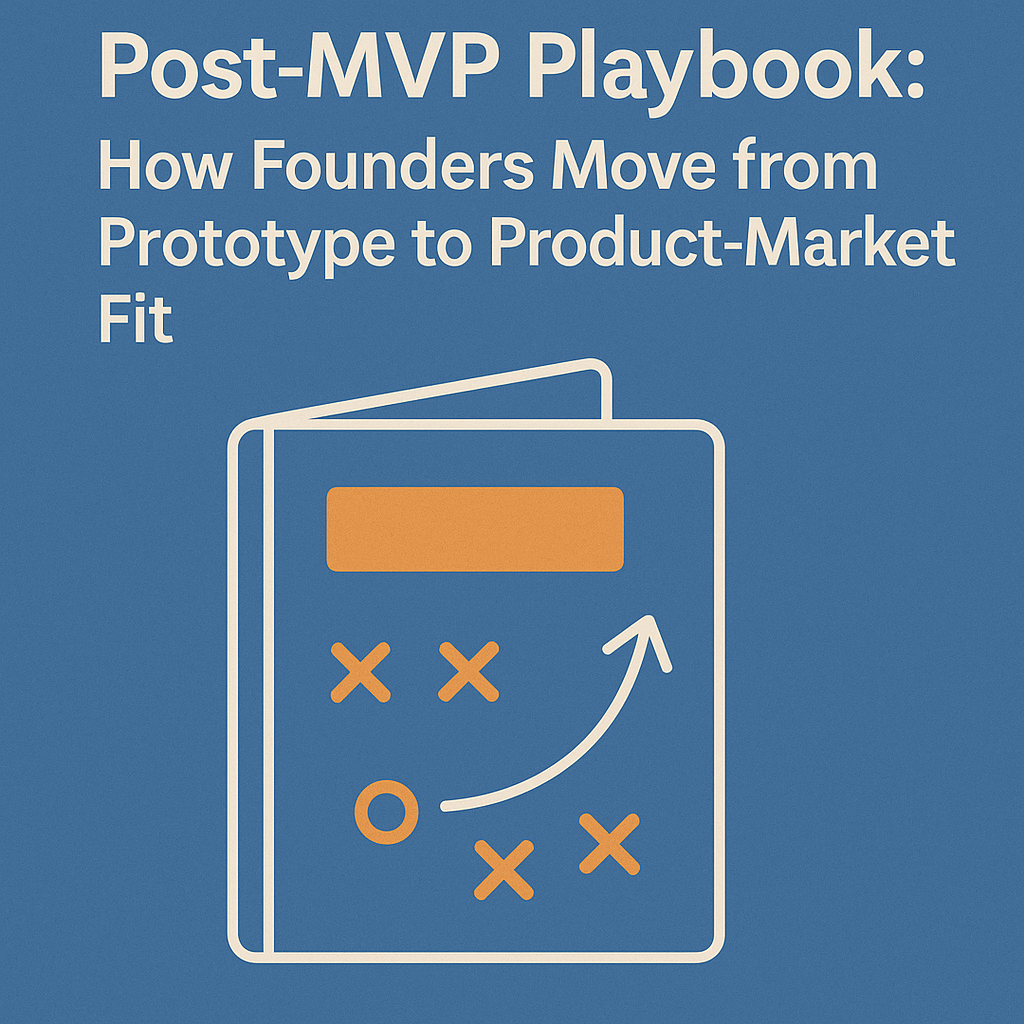Post-MVP Playbook: How Founders Move from Prototype to Product-Market Fit
by Gary Worthington, More Than Monkeys

So, you’ve built and launched your MVP. Congratulations, that’s not easy. But what now? You’re standing at the edge of a much harder phase: getting to product-market fit (PMF). This is where most startups stall, pivot, or die. It’s also where the real work begins.
I’ve helped founders grow products from nothing to tens of thousands of users; like CricketAllrounder (0–75k users globally) and Yepic (0–15k users in year one). Getting to PMF isn’t luck or hustle. It’s about deliberate focus, ruthless prioritisation, and constantly listening to the market.
Here’s the no-nonsense, battle-tested list of 10 things you need to do post-MVP to give your startup the best shot at traction and scale, inspired by the behavioural design lessons laid out in Nir Eyal’s Hooked.
1. Revalidate the Problem — With Real Users
Your MVP validated that something resonated. But that doesn’t mean you’ve nailed the problem. Go back and speak to users ( not friends, not investors ) and ask what problem they think your product solves. If it doesn’t match your assumption, you’re not ready to scale.
Think: “What jobs are they hiring this product to do?”
Use “internal triggers” from Hooked to identify why people are coming back emotionally, boredom, anxiety, ambition, and whether your solution addresses that reliably.
2. Measure Engagement, Not Vanity
Downloads mean nothing. DAUs can lie. Focus on behavioural metrics:
- How often do users come back?
- Where do they drop off?
- What features are sticky?
You’re looking for patterns that indicate your product is becoming a habit — not just a tool.
3. Tighten the Value Loop
The “hook model” is built on creating a fast trigger-action-reward loop. The time between a user signing up and experiencing the “aha” moment should be minimal. Whether it’s uploading a cricket video oradding their first auto-tracked job, compress that loop.
Every click before value = another reason to churn.
4. Start Charging Sooner Than Feels Comfortable
Free users are not customers and the days of investors valuing 1000s of free users are over. Start small, maybe £5/month. Even a token charge forces better feedback and filters out the “tourists.” Don’t wait for a perfect pricing model. Iterate based on willingness to pay.
Use pricing as a form of commitment. Users who pay are signalling intent, and their feedback will carry more weight.
5. Instrument Everything
You can’t improve what you can’t see. Set up product analytics (PostHog, Mixpanel, whatever), use feature flags, track drop-off points, and run small experiments. At Yepic, we made data-informed decisions daily, not once a quarter.
Track every point in the user journey that matches the Hook model: trigger, action, reward, and investment.
6. Kill Features That Don’t Pull Their Weight
MVPs often have fat. Ruthlessly cut anything users don’t understand or use. At Cricket Allrounder, we sunsetted an entire module because 94% of users skipped it, despite being a pet feature of ours.
Simplicity scales. Bloat burns time.
Cutting features makes the core loop clearer, faster, and more compelling — which is what makes habits form.
7. Obsess Over Activation
If you can’t reliably activate new users, there’s no point scaling acquisition. Treat onboarding like a product in itself. Split test flows. Use walkthroughs. Handhold if you must. 70%+ drop-off in your first session? Fix that before you worry about growth.
Activation is where the habit loop starts. Get this wrong and the whole system breaks down.
8. Talk to Users Weekly
Book 2–3 user calls every week. Watch them use the product. Ask where they got stuck. Don’t outsource/delegate this - founders need this signal directly. You’re not too busy. You’re too far removed.
Look for emotional language. People build habits around emotions, not features.
9. Be Brutally Honest About PMF
If you have to ask whether you’ve hit PMF, you haven’t. When it happens, it feels like being pulled by the market. Users chase you, referrals grow, churn drops, and usage becomes habitual.
Until then, assume you’re still learning. Stay lean.
Use the four steps of Hooked as your barometer:
- Are users returning unprompted?
- Are they investing time/data/content?
- Are they telling others?
10. Build the Right Team Around You
This phase needs builders, not just thinkers. Prioritise generalists who can ship, test, and adapt quickly. Avoid overhiring. Don’t bring in “growth” people until you’ve nailed activation and retention.
Early hires should look more like Swiss Army knives than surgical tools.
Look for people who understand behavioural loops and how to trigger them.
Final Thoughts
The post-MVP phase is murky. It’s not as clear-cut as “build the thing.” It’s about listening, iterating, and inching closer to a product people can’t live without.
Most MVPs die not because the idea was bad, but because the team didn’t keep learning. You don’t find PMF by guessing. You earn it through evidence and by understanding what makes habits stick.
If you’re a founder stuck in this messy middle, drop me a message. We help startups navigate this phase without wasting time or money.
Let’s get you from MVP to meaningful traction.
Gary Worthington is a software engineer, delivery consultant, and agile coach who helps teams move fast, learn faster, and scale when it matters. He writes about modern engineering, product thinking, and helping teams ship things that matter.
Through his consultancy, More Than Monkeys, Gary helps startups and scaleups turn chaos into clarity; building web and mobile apps that ship early, scale sustainably, and deliver value without the guesswork.
Follow Gary on LinkedIn for practical insights into agile delivery, engineering culture, and building software teams that thrive.
(AI was used to improve syntax and grammar)